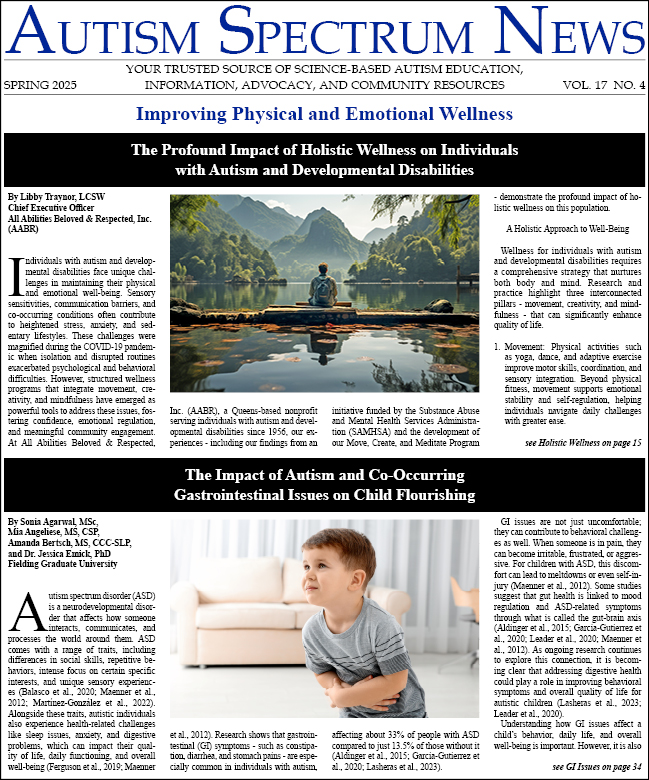-
Teaching the Teachers: Creating New Opportunities and Outcomes in Educating Students with Special Needs
Educating students with special needs is an inherently challenging task due to the individualized and shifting needs of each student. Different schools of thought emerge when contemplating this issue: inclusion, a variety of special education services, modifications/accommodations, community based...
-
Supporting Students on the Autism Spectrum in Higher Education
The continuing rise in prevalence of autism, now at 1 in 88 (Center for Disease Control, 2012), has engendered greater awareness of the condition, followed by increased research, and improved interventions and strategies for individuals with Asperger Syndrome (AS) and High Functioning Autism (HFA)....
-
A Collaborative Education Creates a “Lifestyle” for Learners with Autism
Education is defined by dictionary.com as: 1) The act or process of imparting or acquiring general knowledge, developing the powers of reasoning and judgment, and generally of preparing oneself or others intellectually for “mature” (complete in natural growth or development)...
-
Setting the Stage for School: A Guide for Parents
It is an extraordinary milestone when any child enters school for the first time. This event is often marked with excitement, anxiety, ambivalence and tears of fear and joy for both the child and his or her family. Entrusting the care of your child into the hands of another can be anxiety...
-
Sensory Scanning for Self-Advocacy
Many individuals with autism, like myself, have challenges with the sensory world. Sometimes these challenges are difficult for us to identify, and quite often it’s even harder for those around us to see or understand them. Our senses provide our brains with information about the environment,...
-
Finding the Best Fit: Exploring College and Vocational Options
In the last twenty years the growing awareness of autism, the reconceptualization of autism as a spectrum of characteristics, and improved diagnostic techniques have contributed to the increased demand for specialized educational programs in elementary, secondary, and post-secondary educational...
-
Education, Training, and Job Trends
There is no time greater than during a recession to consider the truth behind the phrase “education matters.” This is especially important for people with autism and other disabilities that, even in a “good economy,” have a difficult time finding employment. Why does post-secondary...
-
Executive Functioning Enhancement for High School Students with ASD
Educators have made great strides in integrating students with autism spectrum disorders (ASD) into general education over the past several decades; however, at the secondary school level, these students still often experience serious difficulties. A major obstacle to success for adolescents on the...
-
Make Inclusion Work! Reducing Behavioral Challenges in the Classroom for Children with an Autism Spectrum Disorder
In recent years, there has been an increased emphasis on including students with disabilities in the general education classroom. Over the years, Public Law 94-142, (Education for All Handicapped Children Act, 1975), which was most recently revised in 2004 under the Individuals with Disabilities...
-
Key Elements of Social Skills Groups in Schools
Autism Spectrum Disorders (ASDs) are characterized by impairments in the domains of social interaction, communication and behavior. For many individuals with ASDs, especially those with Asperger’s Disorder and high functioning autism, social interaction and communication difficulties can have the...




